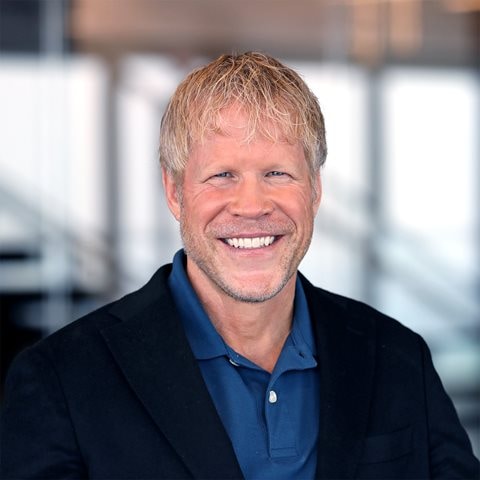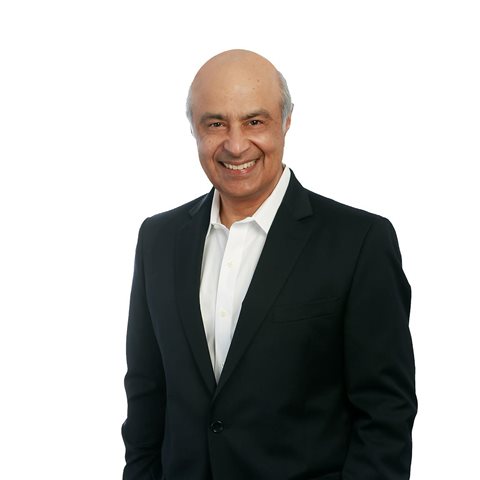It is not the mountain that we conquer, but ourselves.
The world’s highest peak is Mount Everest, majestically rising almost 30,000 feet above sea level. Many mountaineers spend years gaining the experience, skills, physical fitness, and mental toughness needed to make the trek, yet few make it to the top. Since Edmund Hillary and Tenzing Norgay first reached the mountain’s summit in 1953, only about 5,000 people have followed.
The challenges of the climb compound the closer one gets to the top. The trail from the final camp to the summit is dubbed “the death zone,” where thin air and brutal weather combine to create confusion and hallucinations, as well as a host of health-related challenges. For the select few who make it through, however, a magic moment awaits where there are no more upward steps to take. They find themselves, literally, on top of the world.
Since the 1950s, fewer people have made it to the top of Fortune 500 companies than have scaled Mount Everest. When Mary Barra joined General Motors as an 18-year-old engineering intern, the odds that she would someday sit in the CEO chair were far less than one in 750,000 (the number of General Motors employees at the time). It was more probable that she would be struck by lightning! Yet today, she’s more than nine years into her tenure as the first woman ever to lead a US automaker.
Barra’s journey to the top, like that of most Fortune 500 CEOs, involved continuous learning and having a record of success across a wide variety of increasingly senior positions. During her career, she honed many vital leadership traits, such as strategic thinking, relationship building, risk taking, authenticity, humility, objectivity, resilience, stamina, and decisiveness. A few years before becoming CEO, however, she suddenly felt sidetracked as she was unexpectedly shifted to HR into the type of soft job that has long embodied where talented women finish out their careers.
As Barra learned, any leader two or three years out from the top job faces a final ascent as fraught with challenges as the one on Mount Everest. Some executives find themselves sidelined. Others become part of the top team only to discover that they have no desire to step up further. Still others become disoriented, lose their balance, and fall. For some, external factors interrupt the path to becoming the CEO—at least at their company. As Brad Smith, former CEO of Intuit, recounts, “When I stepped down, the conditions were such that Sasan Goodarzi was best suited for our next chapter. The other three candidates were ready to be CEOs in different environments, and they all went on to lead other companies.”1
While there is no way to guarantee success, if you’re a senior executive who aspires to the top job, the following advice will greatly increase your odds:
- Take a gut check of your motivations and expectations.
- Elevate your perspective while boldly delivering results.
- Round out your profile with humility.
- Understand the CEO selection process and put your best foot forward.
Take a gut check of your motivations and expectations
“Everest is not about summiting, adding to your image, the conquest of nature or of other humans,” experienced mountaineers share in a guide to climbing Mount Everest.2 To climbers driven by such motivations, they say, “You will become a prisoner of other people’s judgment in your desire of proving self-worth. You will climb blinded and feel an immense failure if not summiting. Or if successful—go home, celebrate your triumph and fame, and when the lights eventually are turned towards someone else, end up empty.”
Former Cincinnati Children’s Hospital Medical Center (CCHMC) CEO Michael Fisher makes a similar point when it comes to leading organizations. “If the main reason you want to have the CEO title is for ego, that’s unlikely to be a sustainable motivator over time.” Expanding on Fisher’s point, the following table shows a short list of motivations and expectations that provide a good litmus test for whether you’re well suited for the top role.
| Topic | Unsustainable motivation | Sustainable motivation | ||
| Why I want to be CEO | It’s the next step and comes with more power, money, and esteem | I have an exciting vision for the impact the company and I can achieve together | ||
| What being chosen as CEO would mean | I’ve proven myself and attained my ultimate goal | It’s a privilege to serve as CEO for the company’s next chapter | ||
| What not being chosen as CEO would mean | I lost the race, am not CEO material, and have let others down | I’m becoming the best I can be, even if I’m not the right fit here | ||
| How I’ll add value as CEO | I’ll solve the tough problems that no one else can | I’ll ask the tough questions that unlock the full potential of others | ||
| How I’ll feel as CEO | I’ll feel like the center of the action, with people around me to help | I’ll feel lonely because of my vantage point and need for objectivity | ||
| How I’ll act as CEO | I’ll be the boss and can run the place the way I want to | I’ll be responsive to all stakeholders and accountable for everything | ||
If your mindsets on the topics lean toward those in the unsustainable column, it’s unlikely that you’ll find the CEO job worth the effort. The ego satisfaction you’ll get from landing the top job will soon provide small comfort in the face of mounting demands. You’ll be spinning more plates far more intensively than you have in any other role as you set direction, align the organization, mobilize leaders, engage the board, connect with stakeholders, and manage your personal effectiveness.
Stanford University economics professor Nicholas Bloom, who’s spent his career researching CEOs, describes the reality he’s observed: “It’s frankly a horrible job. I wouldn’t want it. Being a CEO of a big company is a hundred-hour-a-week job. It consumes your life. It consumes your weekend. It’s super stressful. Sure, there’re enormous perks, but it’s also all encompassing.”3
Reinforcing the point, Microsoft CEO Satya Nadella describes the job as “24/7.” His late mentor Bill Campbell, who had been a CEO three times and was an influential coach to several technology industry leaders, would often remind him, “No one has ever lived to outwork the job. It will always be bigger than you.” Many CEOs secretly agree that the best job in the world is actually the one right below the CEO. There the spotlight burns less brightly, yet the opportunities to make a difference are great, as are the rewards.
Without the right motivations and expectations, not only will you find that the effort required to be CEO outweighs any personal gain, but you will also be less likely to succeed. As CCHMC’s Fisher puts it, “If you’re not driven by a deep care and concern for the institution you have the privilege to lead and for its stakeholders, then when the going gets tough, you won’t step up to the challenge.”
For these reasons, we encourage any executive setting their sights on the summit to do some genuine soul searching before deciding to make the final ascent. If it’s all about you, or if you’re doing it out of a sense of obligation, know that the top will be a hostile, extreme place where no one will rescue you during times of trouble.
If, however, you’re driven by a passion and vision for how you can help others climb further and faster to achieve new heights collectively, you’ll more than likely end up on a deeply fulfilling adventure. Former American Express CEO Kenneth Chenault captures this winning mindset, “If you want to lead, you have to be committed to serve.”
Last, when taking a gut check of your motivations and expectations, don’t forget to consider the impact that the new job will have on your family members. “The role affects your family far more than you think it will,” reflects Aon’s CEO, Greg Case. Former General Mills CEO Ken Powell explains, “You’re in the newspaper; they’re publishing your salary or talking about when you screw things up. It can be hard on kids. That part is unpleasant.” His advice to aspiring CEOs is simple: “You need to talk it over with your partner if you have one. In my case, my wife and I agreed, ‘OK, this is just part of the pluses and minuses.’” Indeed, virtually every successful CEO we’ve worked with has shared that having a spouse or partner who understands and is supportive of the nature of the job is essential.
Elevate your perspective while boldly delivering results
In 2002, Harvard Kennedy School professors Ronald Heifetz and Marty Linsky introduced a new metaphor into management literature—the concept of “getting off the dance floor and going to the balcony.” The metaphor juxtaposes delivering on daily work (being on the dance floor) with stepping back and seeing the big picture (being on the balcony). The most effective leaders, according to Heifetz and Linsky, are those with the ability to do both at once. This metaphor is particularly useful as your candidacy for the top job develops. During that time, it’s vital that you keep the following actions in mind:
- Don’t miss a step on the dance floor—deliver on your day job.
- Climb onto a higher balcony to hone your view of the future, the company, and the company’s stakeholders.
- Be bold, whether on the balcony or the dance floor.
When General Motors’ Barra stepped into the role of chief HR officer (CHRO) at General Motors, she chose not to focus on the next job. Instead, she embraced the CHRO position and proceeded to redefine talent management, leadership development, compensation, benefits, healthcare, organizational transformation, and other HR systems. “Do the job you’re doing today like you’re going to do it for the rest of your life,” she advises, “because that means you’re going to invest in it, you’re going to make it better, and you’re going to drive efficiencies.”4
When it comes to being on the balcony, there are three perspectives you’ll want to hone. The first is looking into the future of your industry. Microsoft’s Nadella says that to be a successful CEO, “You have to have an absolutely first-class view of where the world is going.” In fact, Nadella’s perspective was very much what helped him become CEO. At the time, the conventional wisdom was that Microsoft would pick a new leader from outside the company. As part of the selection process, candidates were asked to write a memo regarding where they would take the company and why. Nadella, in his memo, laid out the visionary social, mobile, and cloud strategy that persuaded the board to choose him over other candidates and has ultimately resulted in Microsoft becoming one of the most valuable companies on the planet.

CEO Excellence
The six mindsets that distinguish the best leaders from the rest.
The next viewpoint involves looking more broadly across the whole organization—far beyond your area of responsibility. This is easier to do if, during your career, you’ve rotated across roles in various parts of the business. During the final ascent, however, switching jobs might not be a good idea. “I’ve seen too many candidates two years out make the mistake of moving to roles they don’t have time to succeed in,” offers former Westpac Banking CEO Gail Kelly. “It becomes a recipe for disaster.” More reliable ways to broaden your perspective during the final ascent are to get involved in enterprise-level projects, committees, and development programs; invest time in getting educated in other areas; and take an explicitly company-first perspective in your decision making (even if it’s not the best answer for your area).
The third view from the balcony peers over the stakeholder landscape. CEOs of today’s large companies must have a point of view on a wide variety of societal and environmental issues. Therefore they need to have their pulse on employee, customer, and board sentiments and use them to help shape their company’s principles as issues emerge. It takes real time and effort to form thoughtful, educated, institution-level (versus personal) points of view on issues such as responsible AI, rising inequality, political polarization, geopolitical instability, deteriorating climate, and so on.
A trip wire to be wary of, both on the balcony and the dance floor, is risk aversion. Savvy boards are well aware of the conclusive evidence that companies led by CEOs who lack the courage to make bold moves are unlikely to outperform the competition. Westpac’s Kelly uses a cricket analogy to illustrate the point: “As a CEO candidate, you can’t just defend the wicket and hope that you don’t get out. You must step up and hit the ball … never, ever say to yourself, ‘What I’ve done is enough.’”
Take Barra at General Motors. One of the first things she did on taking the HR role was to abolish the company’s ten-page dress code and replace it with two words: “dress appropriately.”5 Doing so was less about clothing than about signaling her willingness to take on General Motors’ hundred-year-old, stodgy, paternal culture and shift it to one that recognized and empowered employees’ own instincts. Such boldness helped her stand out from her peers in the eyes of the CEO and board as the right leader to take the company into the future.
Round out your profile with humility
When asked, 88 percent of Americans will say they’re above-average drivers.6 In the ability to get along with others, 25 percent of students rate themselves in the top 1 percent.7 When couples are asked to estimate their individual contributions to household work, the combined total routinely exceeds 100 percent.8 These are all statistical impossibilities. They’re also great examples of how we’re often predisposed to view our actions favorably or interpret events in a way that’s beneficial to us. As an aspiring CEO candidate, it’s important to have the humility to recognize your inherent self-serving bias and counteract it:
- Objectively assess your capabilities versus what’s needed.
- Fill your skill gaps and gauge your progress on the way.
- Refuse to play politics in the process.
Assessing your capabilities starts with understanding what the company needs in its next leader. Intuit’s Smith uses a horse-racing analogy: “The reason there are very few Triple Crown winners,” he says, “is because the Kentucky Derby is a very different track than the Preakness, which are both different than the Belmont. Right horse, right track. If you’re a candidate, first ask yourself in an intellectually honest way, ‘What does the company most need?’ And ‘Do I have that skill set today?’”
To understand the extent to which you’ve got what the company needs, break your abilities down into at least four dimensions. The first is your breadth of experience and record (for example, leading transformational change, delivering a profit-and-loss statement, and representing the company externally). Second is your knowledge and expertise (for example, financial acumen, sales leadership, technology, target markets, and industry trends). The third is your leadership skill (for example, strategic thinking, executive presence, team building, and self-awareness). Finally, how strong are your relationships, and what is your reputation? How are you viewed by internal stakeholders, such as your boss, peers, direct reports, and influencers? How about by external stakeholders, such as investors, customers, suppliers, regulators, and community leaders? And how about by board members?
To help break through any self-serving bias, it’s important to seek others’ views. That might involve getting feedback from mentors, confidants, peers, and so on, but more often than not, you should ask someone else to gather that 360-degree information. It may be a trusted colleague, but most often, it’s an external coach who gathers the input.
Former Best Buy CEO Hubert Joly reveals how his thinking has evolved on the use of coaches: “Years ago, if somebody had told me, ‘Scott is working with a coach,’ I would have wondered, ‘Uh-oh, what’s wrong with Scott? Is he in trouble?’ Now I realize an executive coach can help successful leaders get better. One hundred percent of the world’s top 100 tennis players have a coach, 100 percent of NFL teams have a coach—in fact, a coaching staff. So why on earth should executives not have a coach?”
Once you’ve assessed how you stack up in the four dimensions, it’s time to start improving yourself. Think of it as embarking on a learning journey that involves cycles of taking action and then reflecting with a close group of advisers on the progress being made. Such journeys typically combine ongoing leadership coaching with participation in various forums or roundtables, visits to other companies, targeted reading lists, briefings from experts, and finding opportunities to gain experience and build relationships (for example, dealing with the media, presenting to the board, and representing the company externally).
Going on such a journey requires striking a delicate balance. You’ll want to increase your visibility to ensure that those who need to know are aware that you want to make the final ascent without being seen as self-promoting or currying favor. “I’ve seen this go awry so many times when people begin to run for the job,” shares Intuit’s Smith. “They almost campaign for the role, and that’s the quickest way to throw you off track.”
Westpac’s Kelly shares the keys to success: “Don’t play politics. Don’t undermine people. None of that ends well. Be authentic, transparent, a team player, and an active supporter of colleagues for the greater good, even if they are also in the running for the role.” Her advice reinforces why we started this article with the importance of taking a gut check of your motivations and intentions. If they’re not sustainable, you simply won’t be able to walk the line with authenticity. CCHMC’s Fisher summarizes how it all comes together: “It’s a quiet ambition pursued with humility. You gain confidence as you go by learning and growing every day.”
Getting the balance right doesn’t just set you in good stead as a CEO candidate. It’s also a win for the institution. What company isn’t better off for having more service-oriented leaders connecting across the enterprise and boldly solving for the good of the whole organization, especially if they’re doing so while delivering on their core responsibilities, building their self-awareness, and developing new capabilities and more fruitful relationships?
Understand the CEO selection process and put your best foot forward
There’s a point in the climb from the final camp on Mount Everest to the summit where the mountaineer reaches what’s called the “south summit” and knows they’re just a couple of hours from their dream coming true. But there is one obstacle in the way: Knife Ridge. According to climbers, “You will gasp upon seeing it. It is steep and looks truly nasty.”9
When you’re formally tapped to be in the CEO selection process, you’ll likely have a similar mix of excitement and dread. While every board’s process is unique, most will involve the following steps:
- choosing a top-tier headhunting company to identify the best candidates
- defining what the business needs from its next CEO
- determining which stakeholders will play roles in the process and at which stages
- conducting an initial search to canvas and approach potential candidates both inside and outside the company—including qualified executives not proactively looking to move
- narrowing the list through in-depth due diligence (often including 360-degree references)
- holding initial screening interviews to narrow the list to the strongest prospects (the headhunter typically does these interviews)
- creating a detailed psychometric, personality, and competency profile that allows candidates to be easily scored and compared
- conducting the final stage of interviews to explore each candidate’s vision for the company, leadership qualities, and matching of the desired profile of the next CEO
- doing further due diligence (identity check, credit check, and ensuring that no other disqualifications exist) on the preferred candidate, with their consent
- making sure that all relevant stakeholders are confident in the preferred candidate’s suitability and then formally making an offer.
The good news is that if you’ve followed the advice we’ve already shared, you’re already well prepared for many of the board’s inquiries. You’ll be able to articulate why you want the role. You’ll have a bold vision for where the company should go next and how value will be created across the portfolio. You’ll also have translated that into a perspective on what the company needs from its next CEO and be able to make a fact-based argument that your experience, knowledge, leadership skills, and relationships make you the right horse for the course. You’ll be prepared to talk about how you’ve grown over the past three to five years yet also be clear-eyed and honest about your areas of weakness and how you’ll need to surround yourself with others who can help in those areas. You’ll also have built a following among your colleagues by leading authentically and helping others.
That said, Knife Ridge is no place to start winging it. “Probably the single-most important responsibility the board has is CEO selection,” CCHMC’s Fisher explains. “They take it very seriously, and so should you. Prepare; prepare; prepare.” Fisher, who has served as CEO of three different organizations, made it a point to rehearse his pitch and be mock interviewed multiple times by his closest advisers, encouraging them to play the role of the cynic. He anticipated questions and had crisp and compelling answers. He had a second set of eyes on any written material submitted into the process. Fisher’s successes bear witness to the famous assertion attributed to American football coach Vince Lombardi: “The will to win is not nearly as important as the will to prepare to win.”
We’ve supported numerous executives as they made their way to the summit. Reflecting on this experience, our top ten list of less-obvious yet high-impact advice for putting your best foot forward in the formal selection process is as follows, in no particular order:
- The headhunter is your ambassador to the search committee. Respect them and the process they’ve set up (don’t try to work around it).
- Every interaction is part of the interview process. Show your best self, whether it’s in formal settings (such as presentations and interviews) or informal settings (such as dinners and ad hoc discussions)
- You’ll be up against outsiders with fresh and bold perspectives. Make sure that you have an outsider’s perspective while being clear on why being an insider is advantageous.
- Connect the dots for people. You know your story; they don’t—it’s up to you to put it together for them in a way that makes sense and is easy to comprehend.
- Boards, not the sitting CEO, choose the new CEO. Don’t mistake positive (or negative) signals from the incumbent to be representative of your standing in the process.
- Prepare not only for business-related interview topics but also for personal ones (for example, “Tell us about some formative experiences that have helped you build resilience”).
- Listen closely to what’s being asked and the subtext beneath it, and strive for brevity, clarity, and memorability in your responses.
- Don’t just prepare the content. Think through how it is that you want your audience to feel when you leave the room (and adjust your approach accordingly).
- Interviews are a two-way process. Ask questions that help you understand what your mandate will be and make sure that the job will be one you want to have.
- As in other parts of the journey, authenticity matters. You may be able to fake it in an interview, but you’re not going to be able to fake it as a CEO.
While we’ve directed our advice in this article toward internal CEO candidates, much of it applies to those courting a CEO role outside their current organization as well. We’ve also endeavored to make the insights here relevant regardless of the role one has during the final ascent (whether you’re the COO, CFO, the head of a business unit, and so on).
That said, we also encourage leaders to seek out advice specific to the positions they hold. For example, if you’re a CFO shooting for the CEO job, you may have an extra burden to show that you see a picture bigger than just the numbers, that you’re willing to take risks on new concepts with no precedent, and that you can motivate and engage colleagues through stories as well as facts.
“We might succeed or not; that’s not important,” report experienced Mount Everest alpinists.10 “The summit is such a small piece of the mountain. Most of the beauty and wonders are experienced during the climb.” The ascent to the CEO role is similar. The learning from the journey will be invaluable and, more than likely, set you in good stead to summit other beautiful mountains if that remains an aspiration. If you do set foot on the highest peak, we’ll offer our congratulations—you’re among the world’s most elite business mountaineers.
So take a deep breath and get ready to climb new heights.






